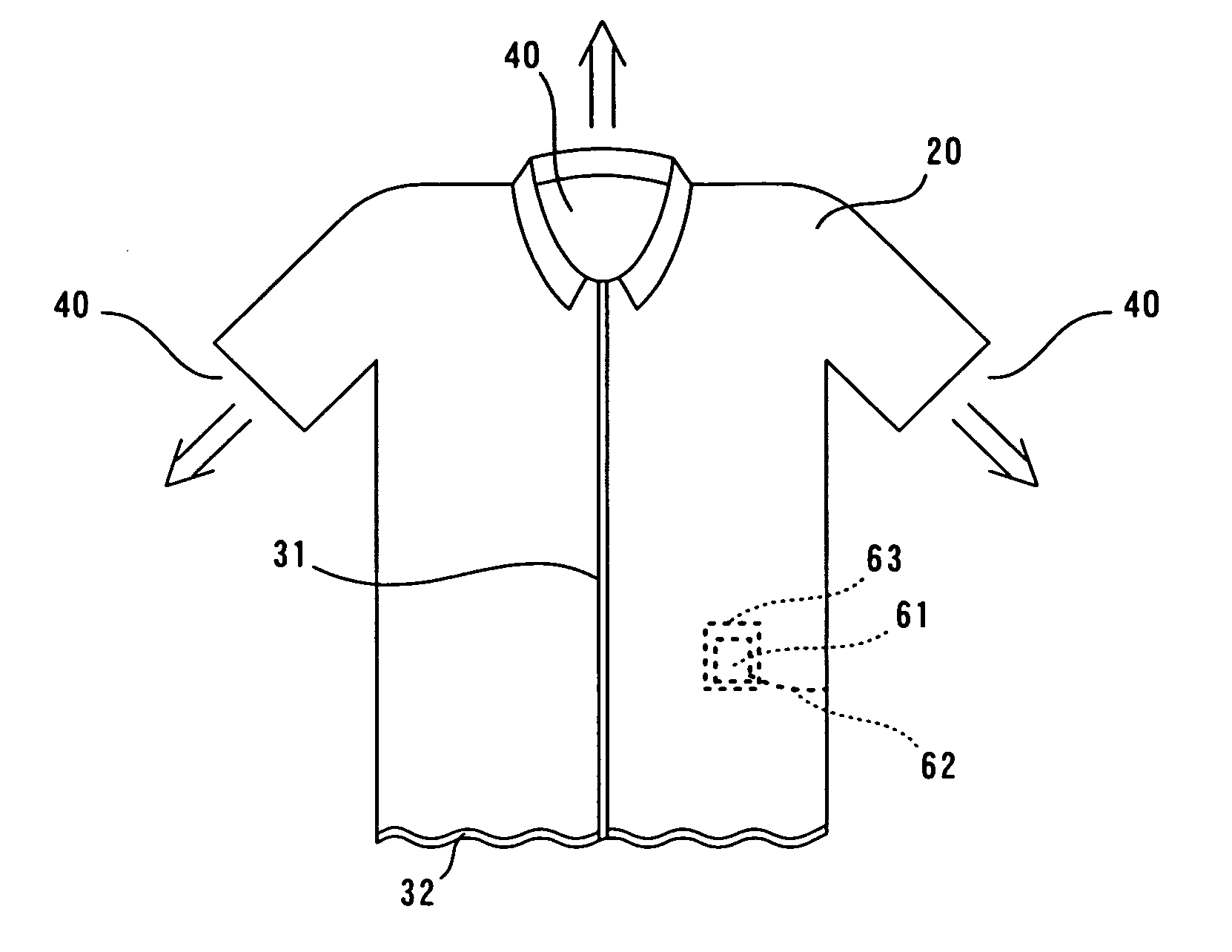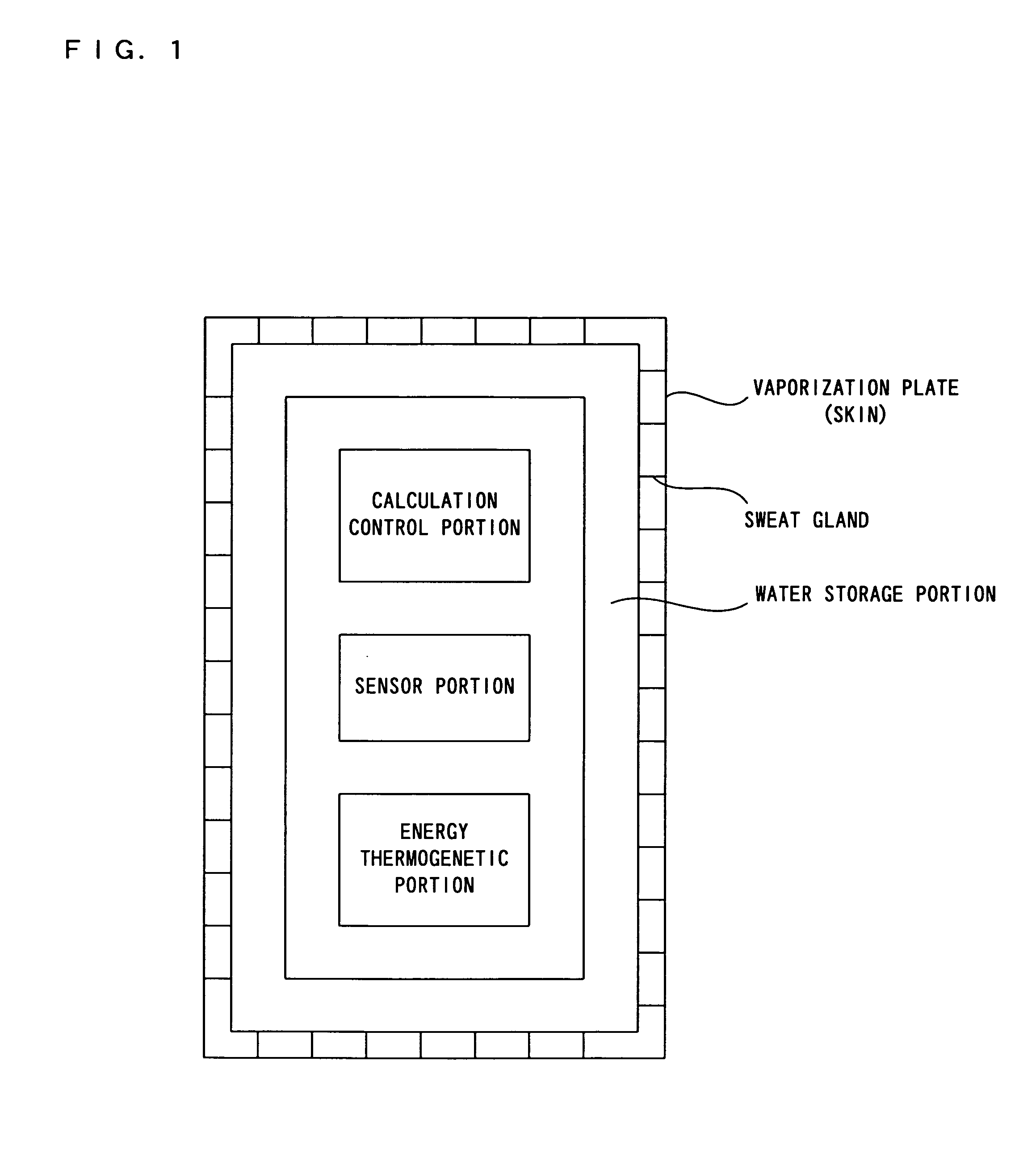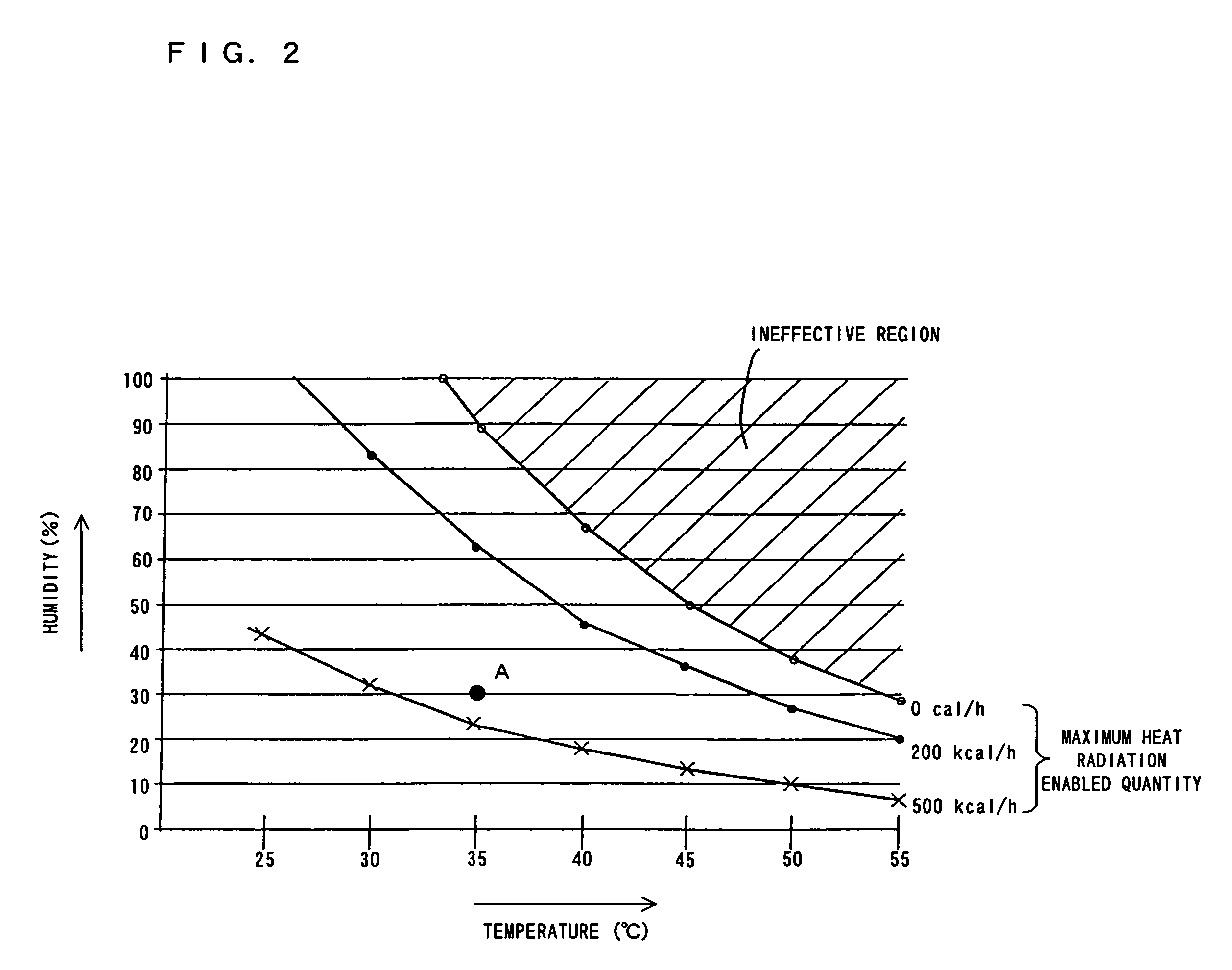Air-Conditioning Garment
a technology for air conditioners and garments, applied in the field of air conditioners, can solve the problems of increasing the power consumption of the whole society, increasing the penetration rate of the air conditioner, and increasing the power consumption of the spread of the air conditioner, and achieve the effect of small power consumption
- Summary
- Abstract
- Description
- Claims
- Application Information
AI Technical Summary
Benefits of technology
Problems solved by technology
Method used
Image
Examples
first embodiment
[0090] A first embodiment according to the present invention will be first described with reference to the accompanying drawings. FIG. 9A is a schematic front view of an air-conditioning garment according to the first embodiment of the present invention, and FIG. 9B is a schematic rear view of the air-conditioning garment.
[0091] As shown in FIG. 9, an air-conditioning garment 1 according to the first embodiment is provided with a clothing material portion 20, opening / closing means 31, lower air leak preventing means 32, three air circulating portions 40, 40 and 40, two air sending means 50 and 50, power supplying means 61, a power supply cable 62, a power supply pocket 63, a power supply switch (not shown), and flow quantity adjusting means (not shown). This air-conditioning garment 1 is used as the most practical garment for a light duty. Here, a main specification of this air-conditioning garment 1 is organized in the table of FIG. 5.
[0092] The clothing material portion 20 cover...
second embodiment
[0122] A second embodiment according to the present invention will now be described with reference to the accompanying drawings. FIG. 13A is a schematic front view of an air-conditioning garment according to the second embodiment of the present invention, FIG. 13B is a schematic rear view of the air-conditioning garment, FIG. 14A is a schematic plan view of an integrated belt used in the air-conditioning garment, and FIG. 14B is a view illustrating a state where the integrated belt is attached to a clothing material portion. Further, FIG. 15A is a schematic plan view of a local spacer used in the air-conditioning garment, FIG. 15B is a schematic side view of the local spacer, and FIG. 15C is a view illustrating a state where the local spacer is attached to the clothing material portion. It is to be noted that, in the second embodiment, like reference numerals denote parts having the same functions as those in the first embodiment, thereby eliminating their detailed explanation.
[012...
third embodiment
[0135] A third embodiment according to the present invention will now be described with reference to the accompanying drawings. FIG. 16A is a schematic front view of an air-conditioning garment according to the third embodiment of the present invention, and FIG. 16B is a schematic rear view of the air-conditioning garment. It is to be noted that, in the third embodiment, like reference numerals denote parts having the same functions as those in the first and second embodiments, thereby eliminating their detailed explanation.
[0136] As shown in FIG. 16, an air-conditioning garment 3 according to the third embodiment is provided with a clothing material portion 20a, opening / closing means 31, lower air leak preventing means 32, three air circulating portions 40, 40 and 40, two air sending means 50 and 50, power supplying means 61, a power supply cable 62, a power supply pocket 63, a power supply switch (not shown), and local spacers 70 and 70. Here, the clothing material portion 20a fu...
PUM
 Login to View More
Login to View More Abstract
Description
Claims
Application Information
 Login to View More
Login to View More - R&D
- Intellectual Property
- Life Sciences
- Materials
- Tech Scout
- Unparalleled Data Quality
- Higher Quality Content
- 60% Fewer Hallucinations
Browse by: Latest US Patents, China's latest patents, Technical Efficacy Thesaurus, Application Domain, Technology Topic, Popular Technical Reports.
© 2025 PatSnap. All rights reserved.Legal|Privacy policy|Modern Slavery Act Transparency Statement|Sitemap|About US| Contact US: help@patsnap.com



